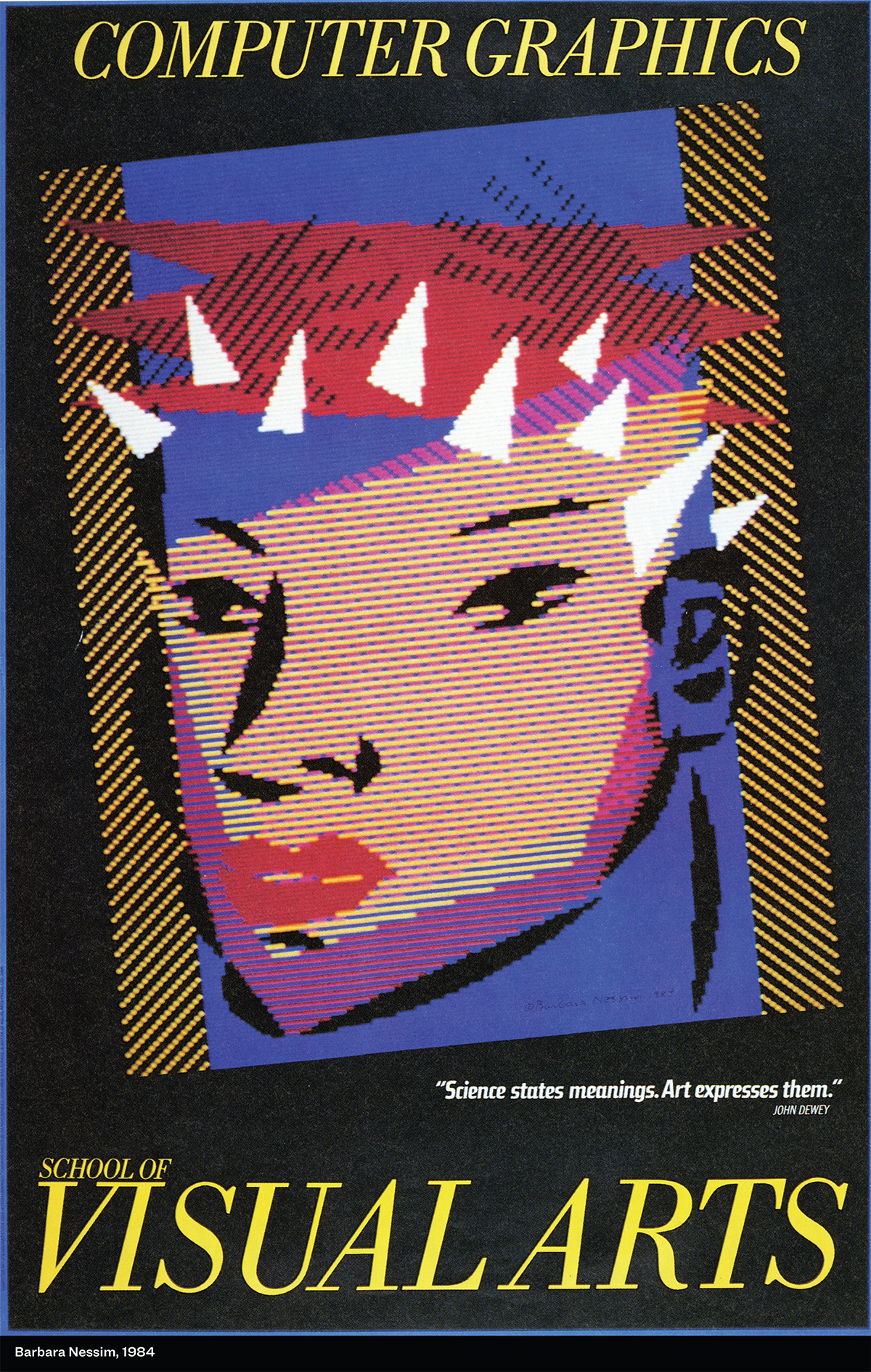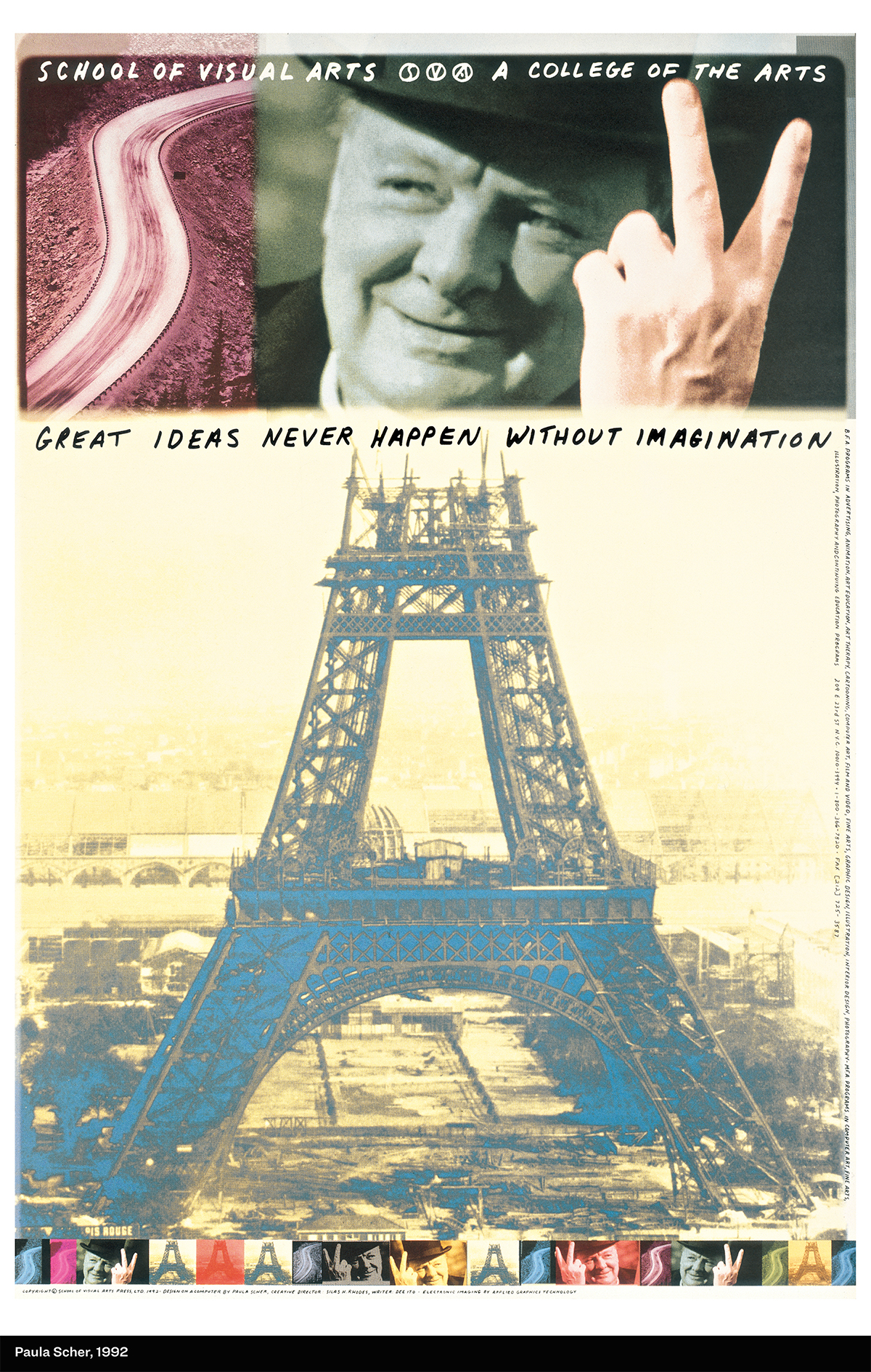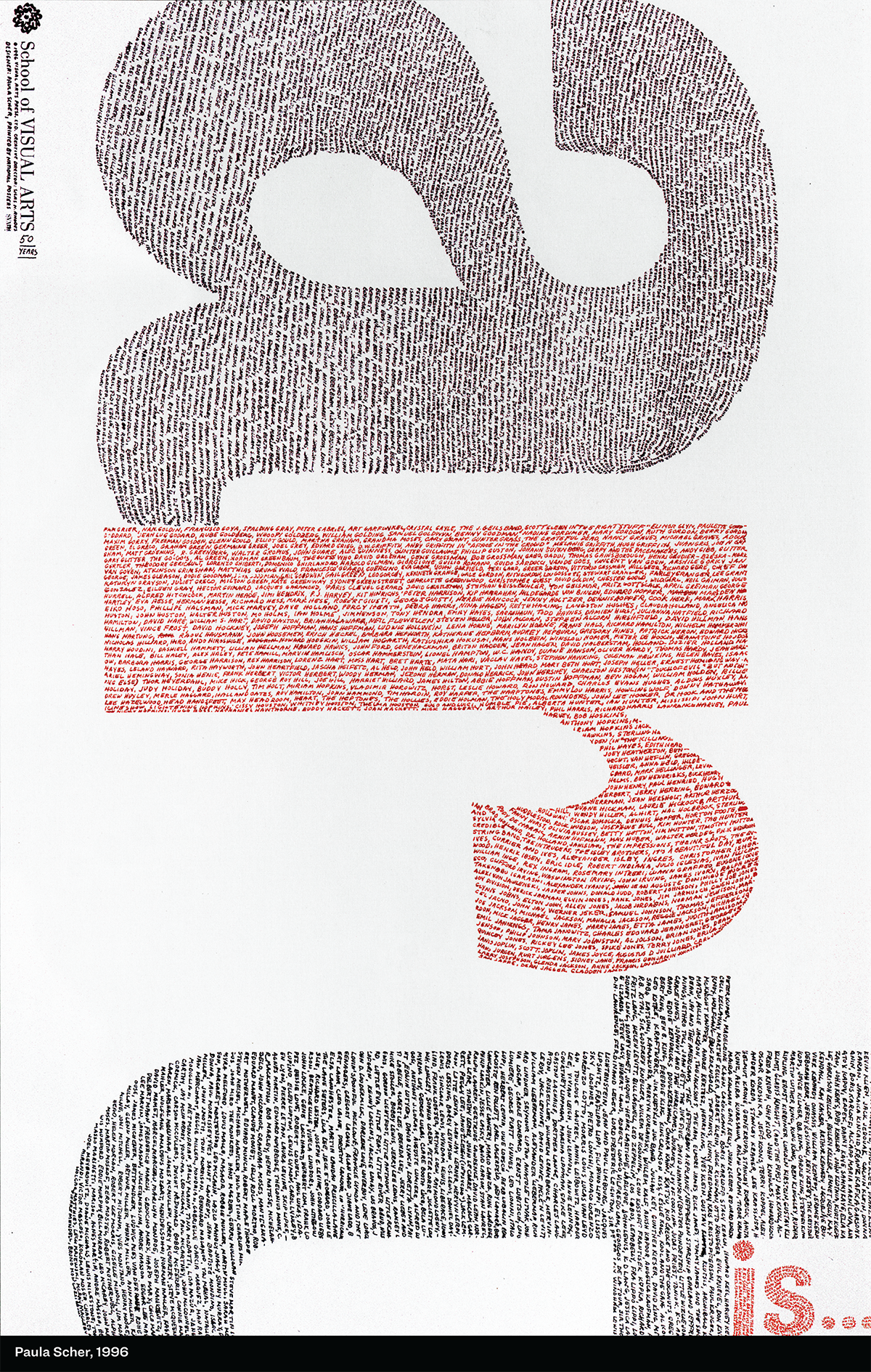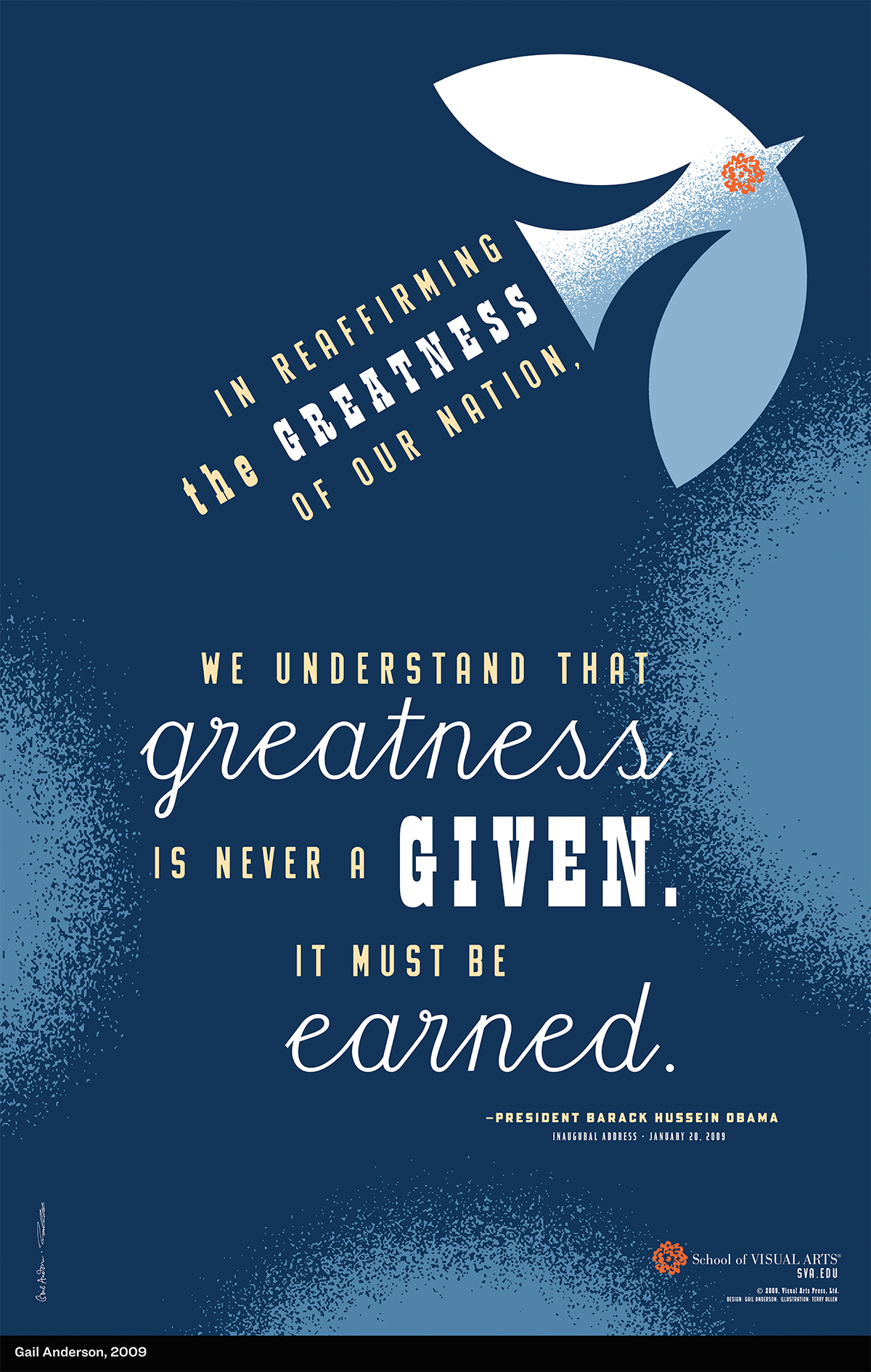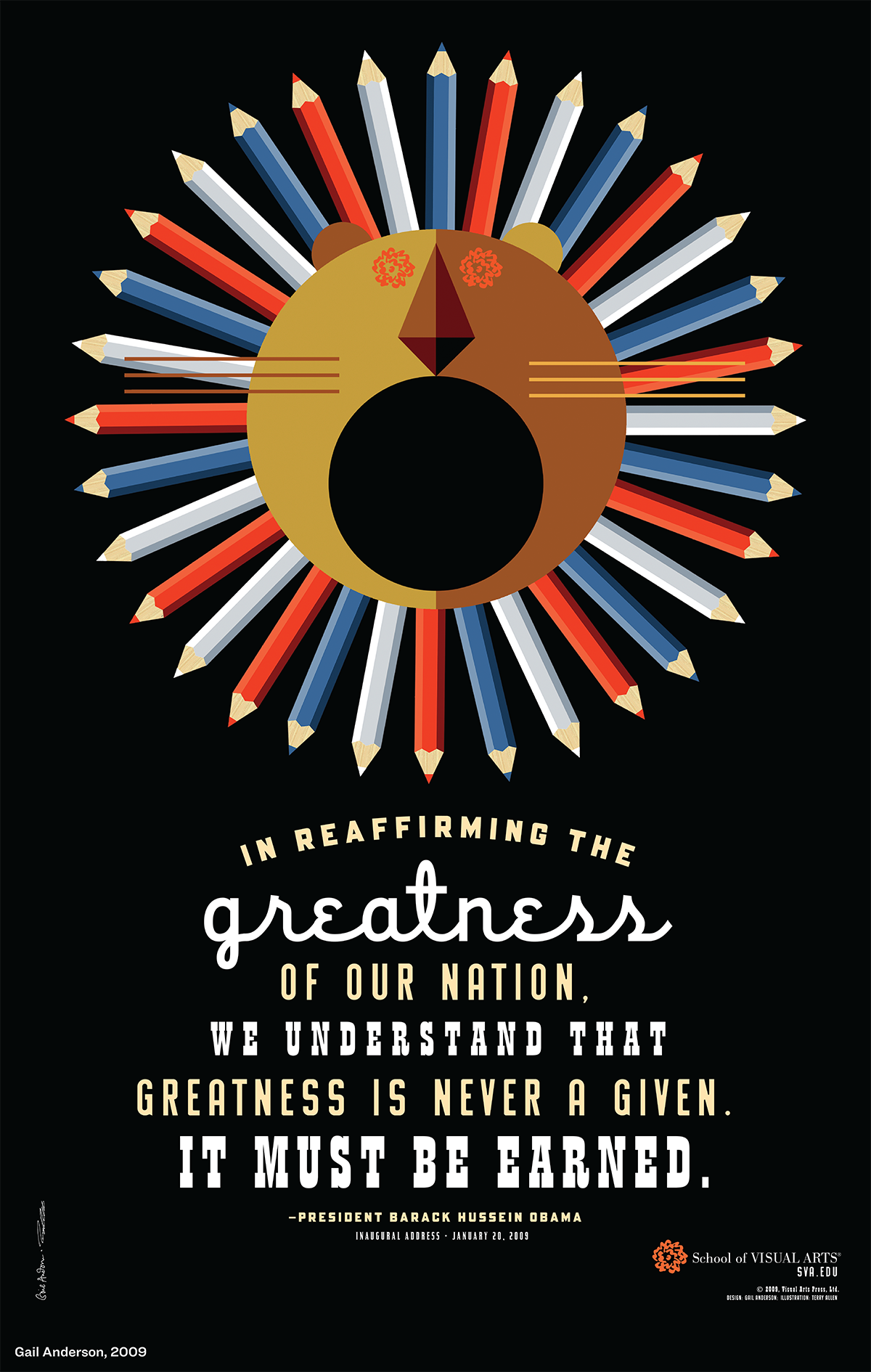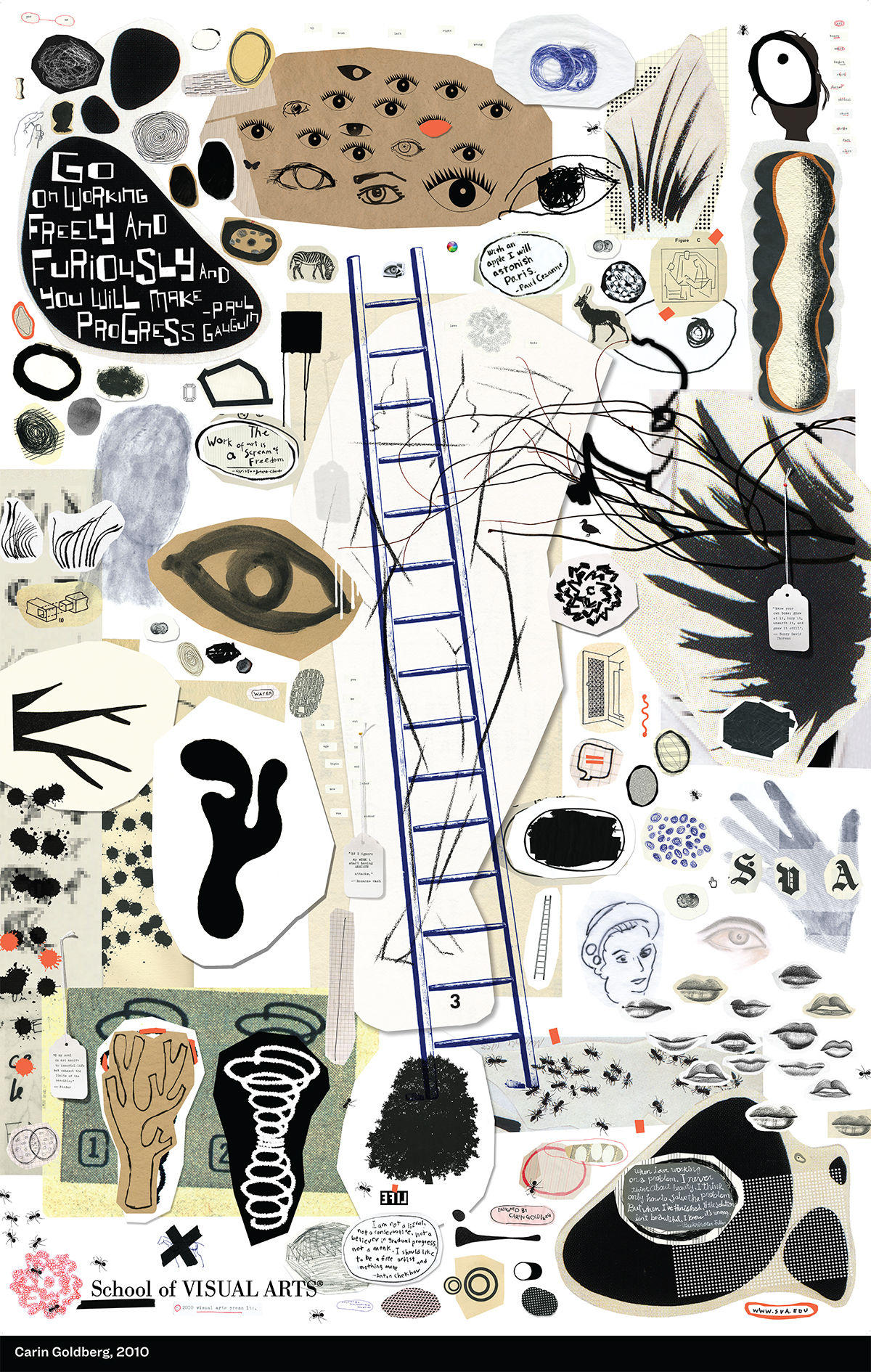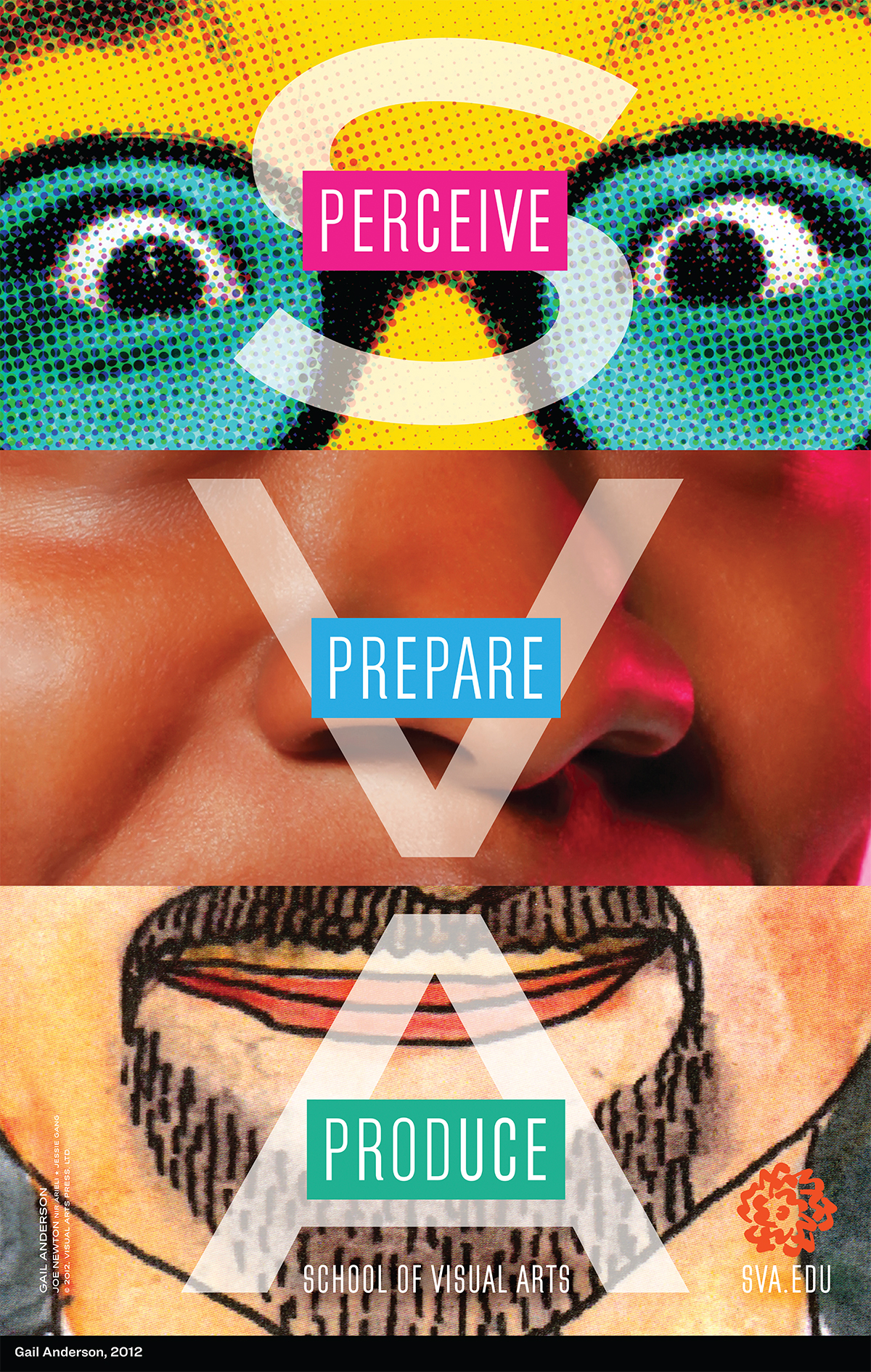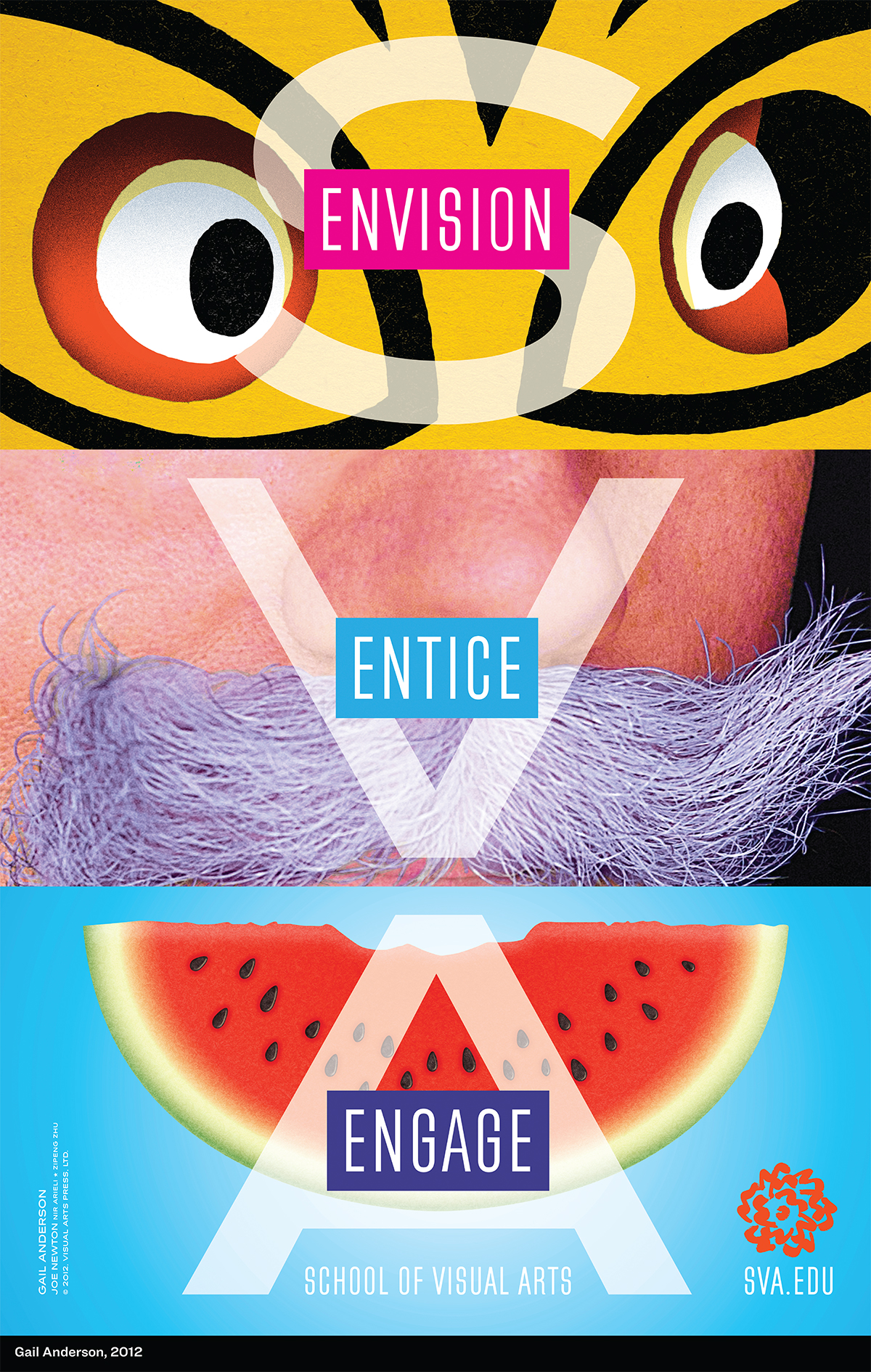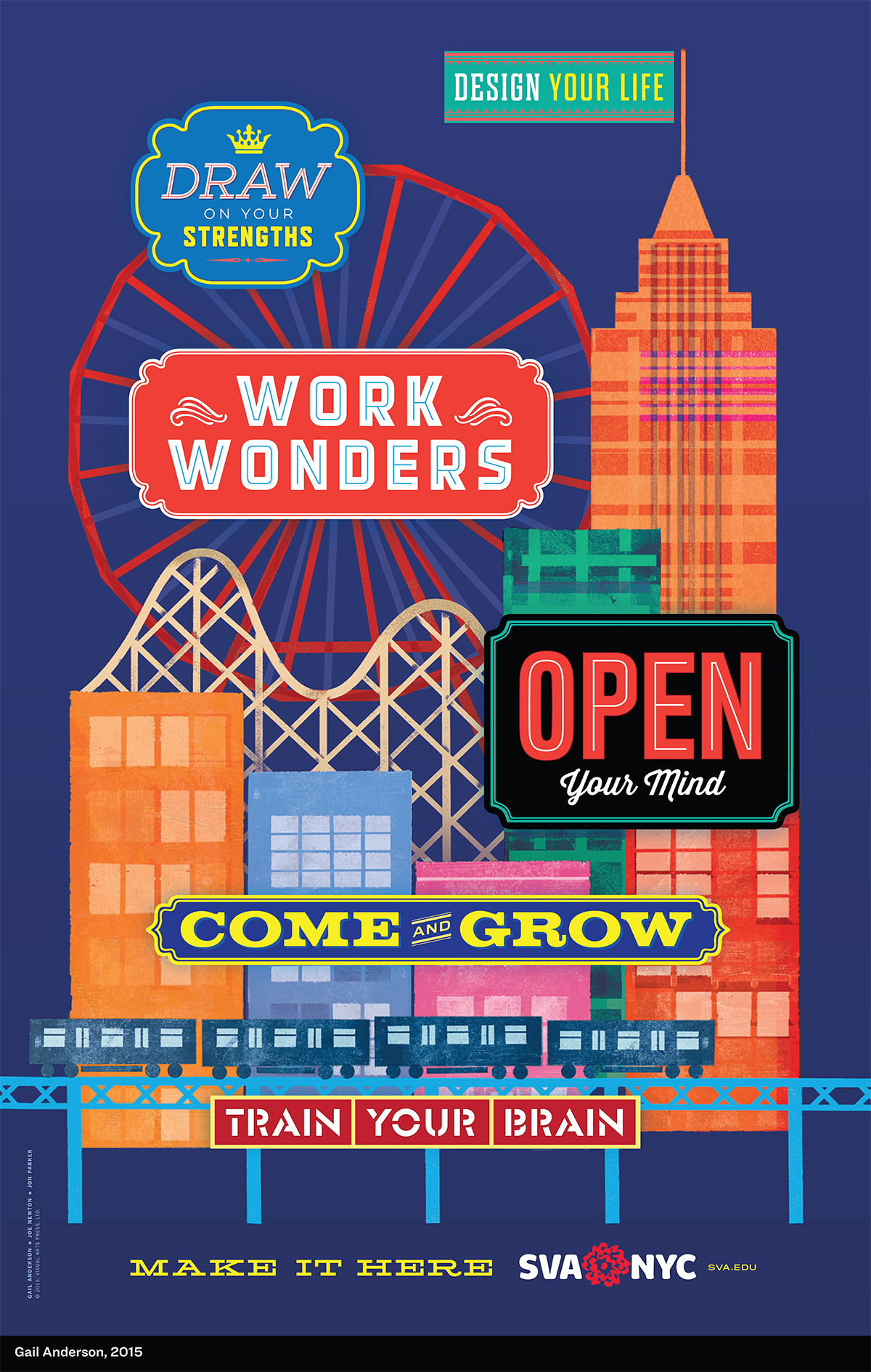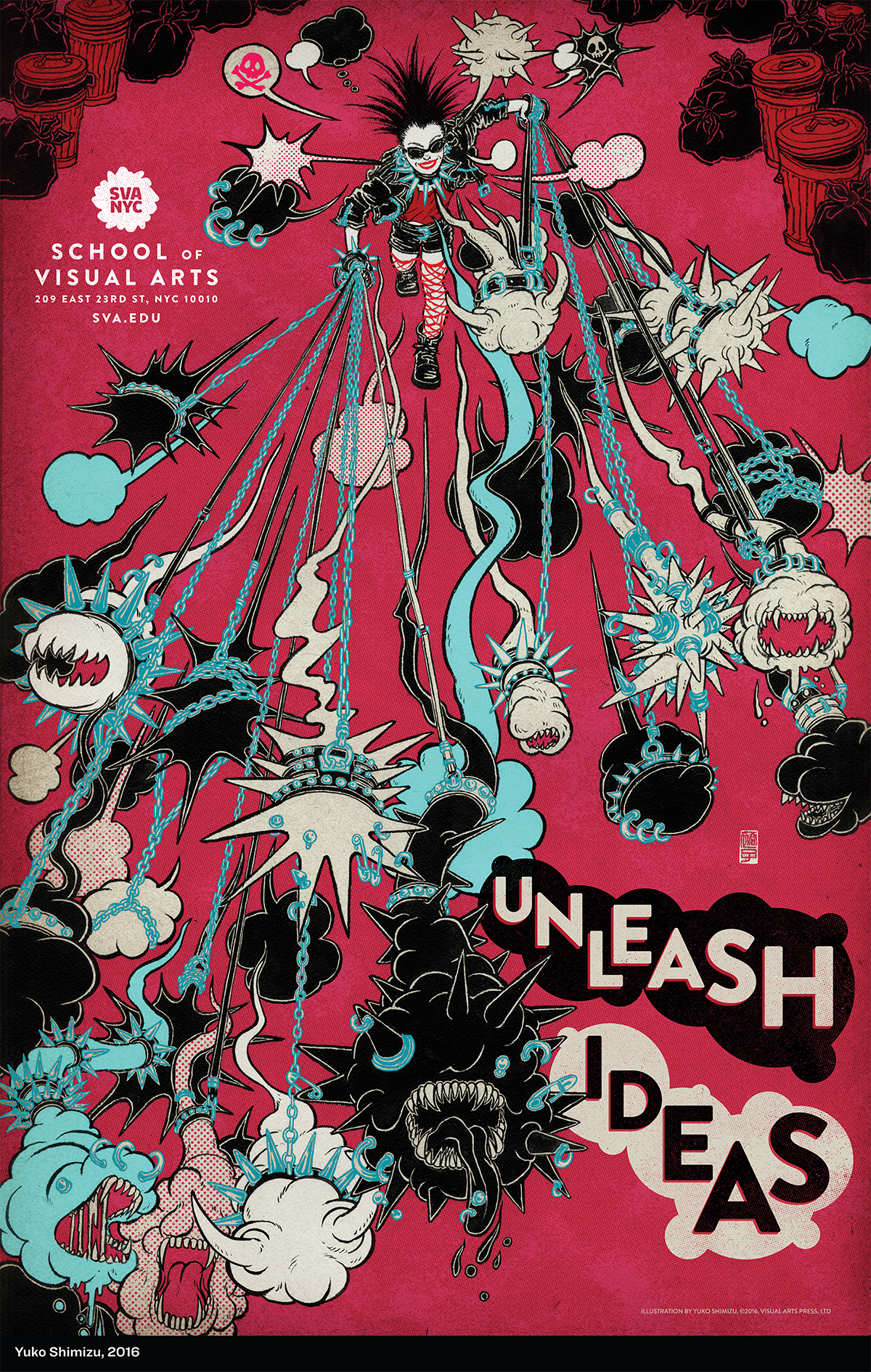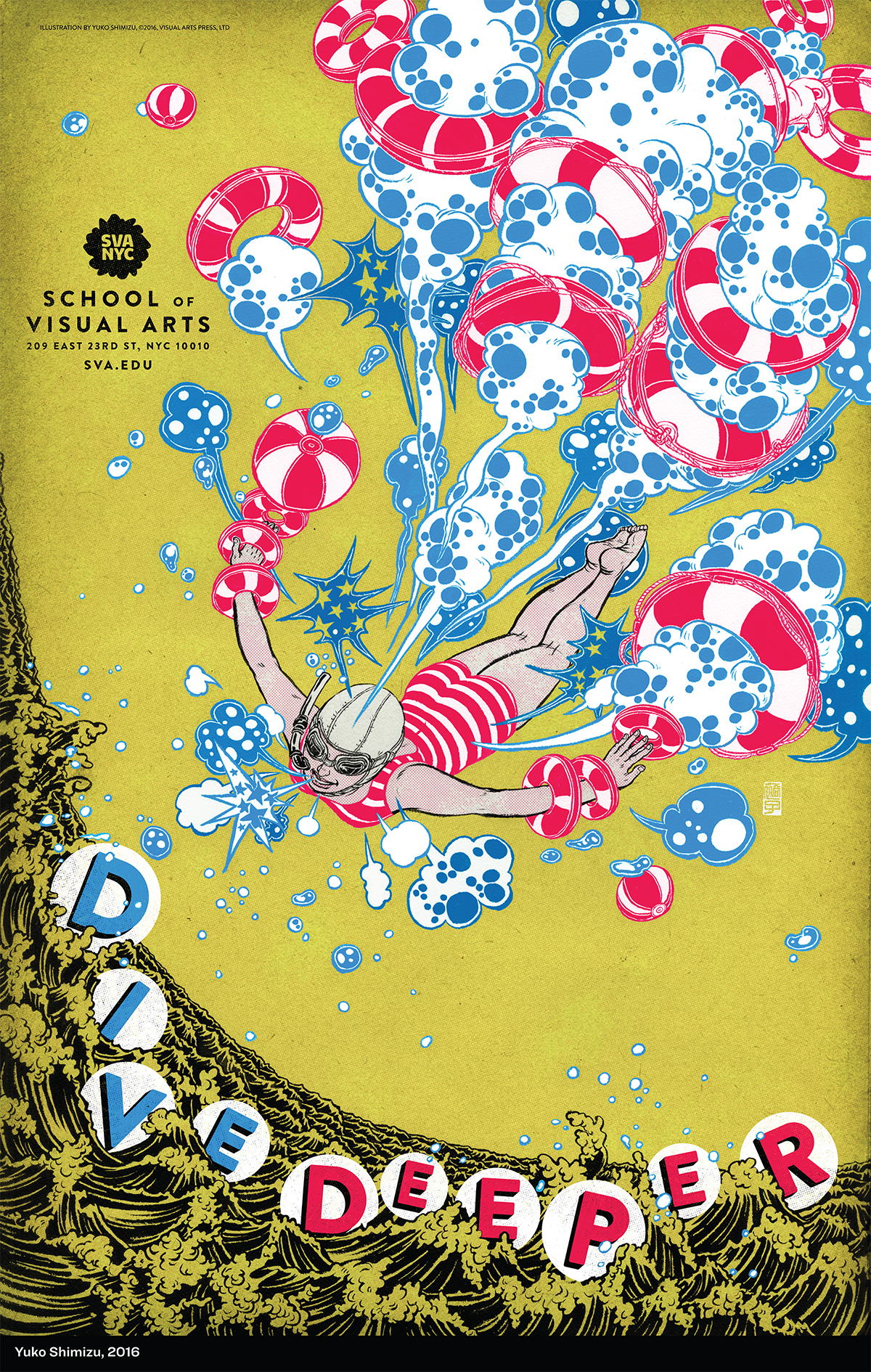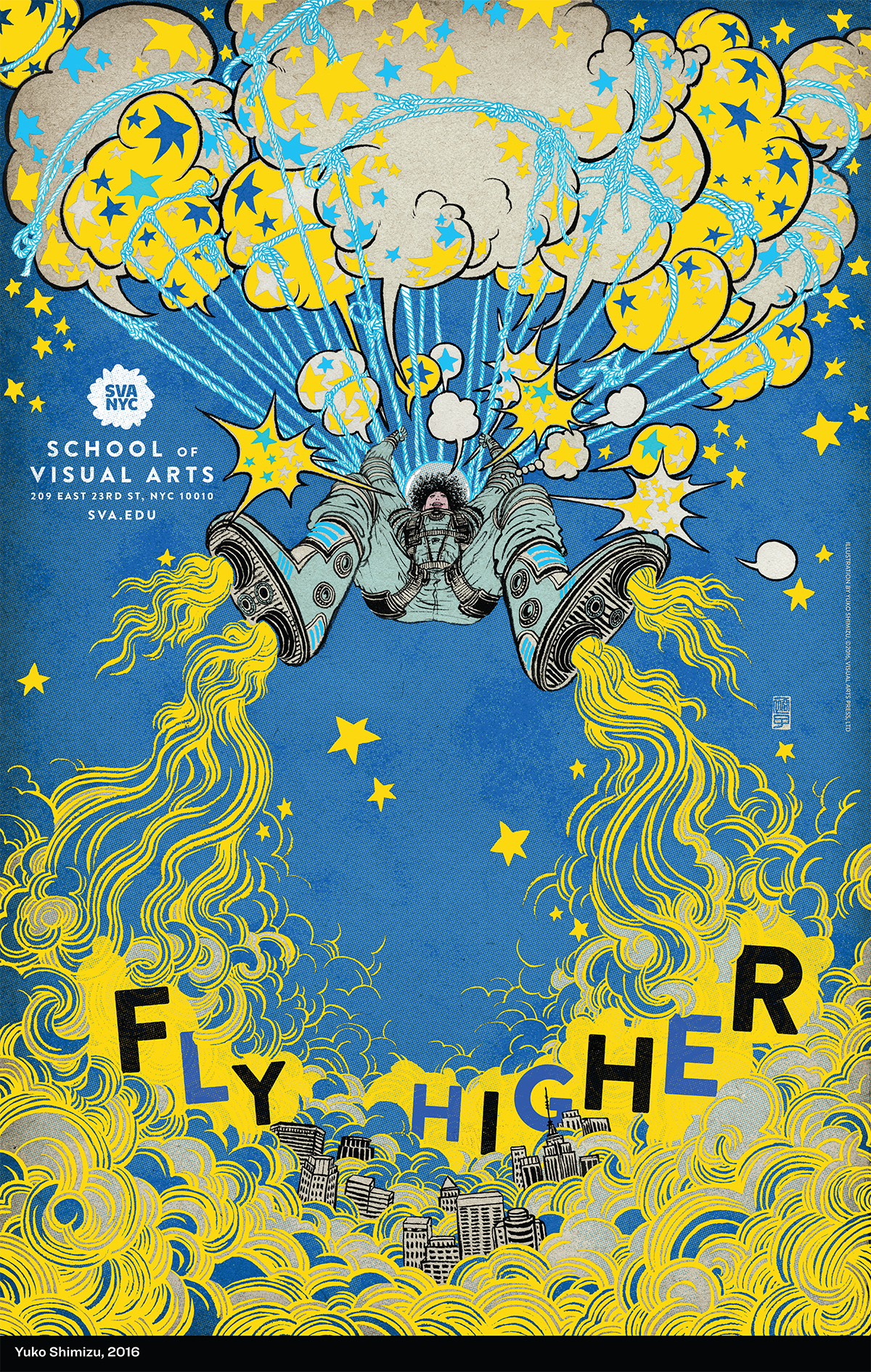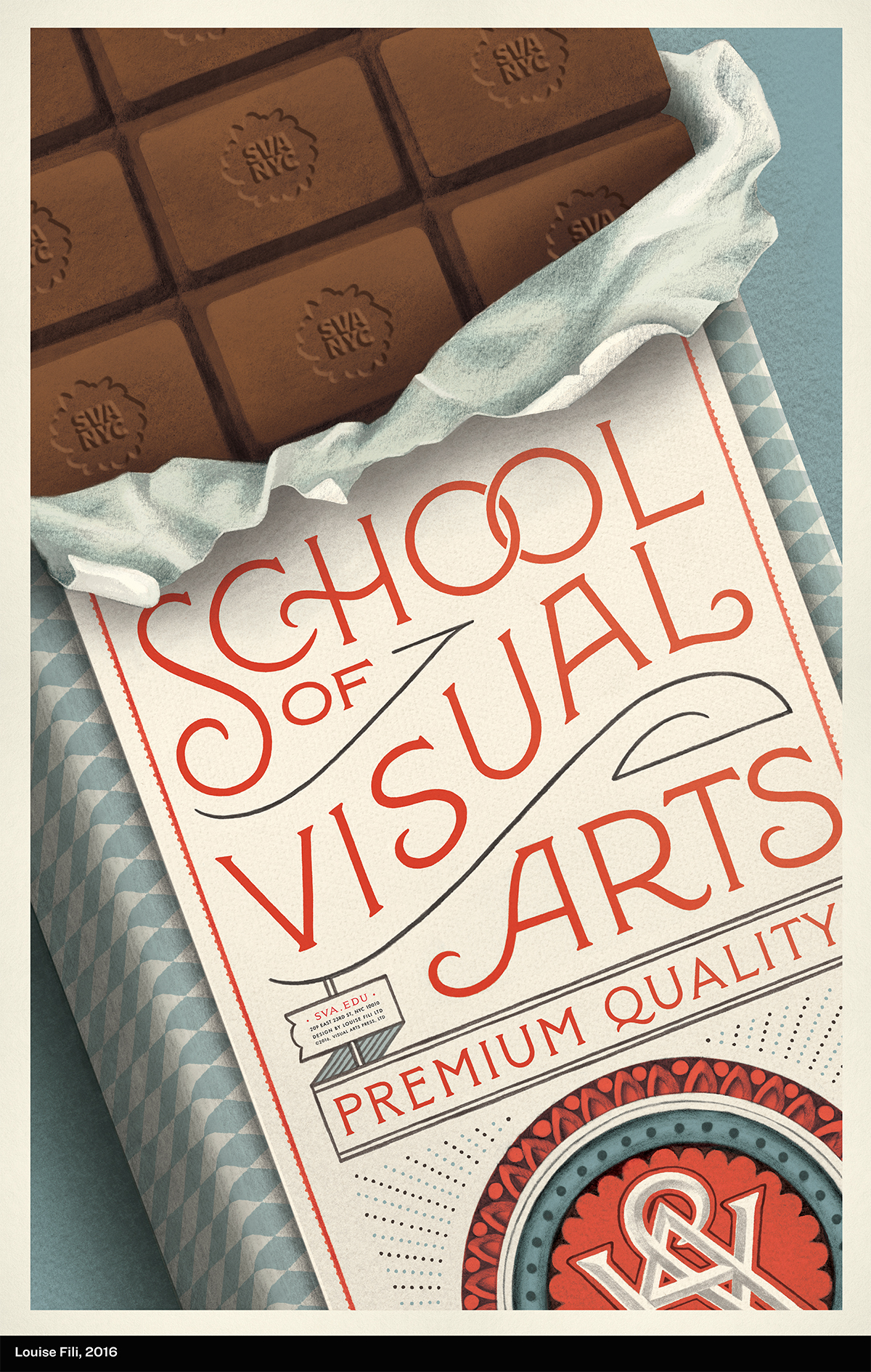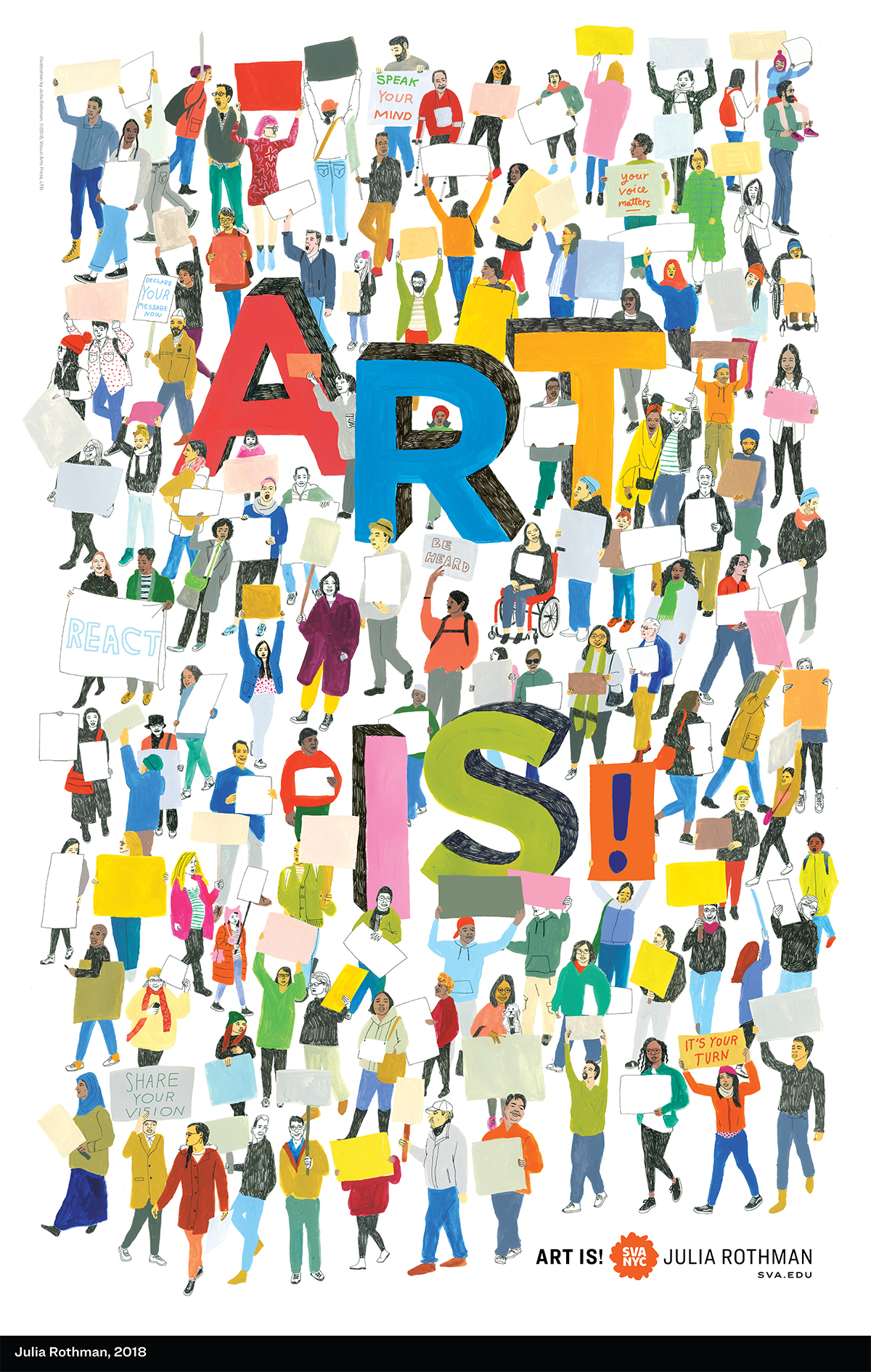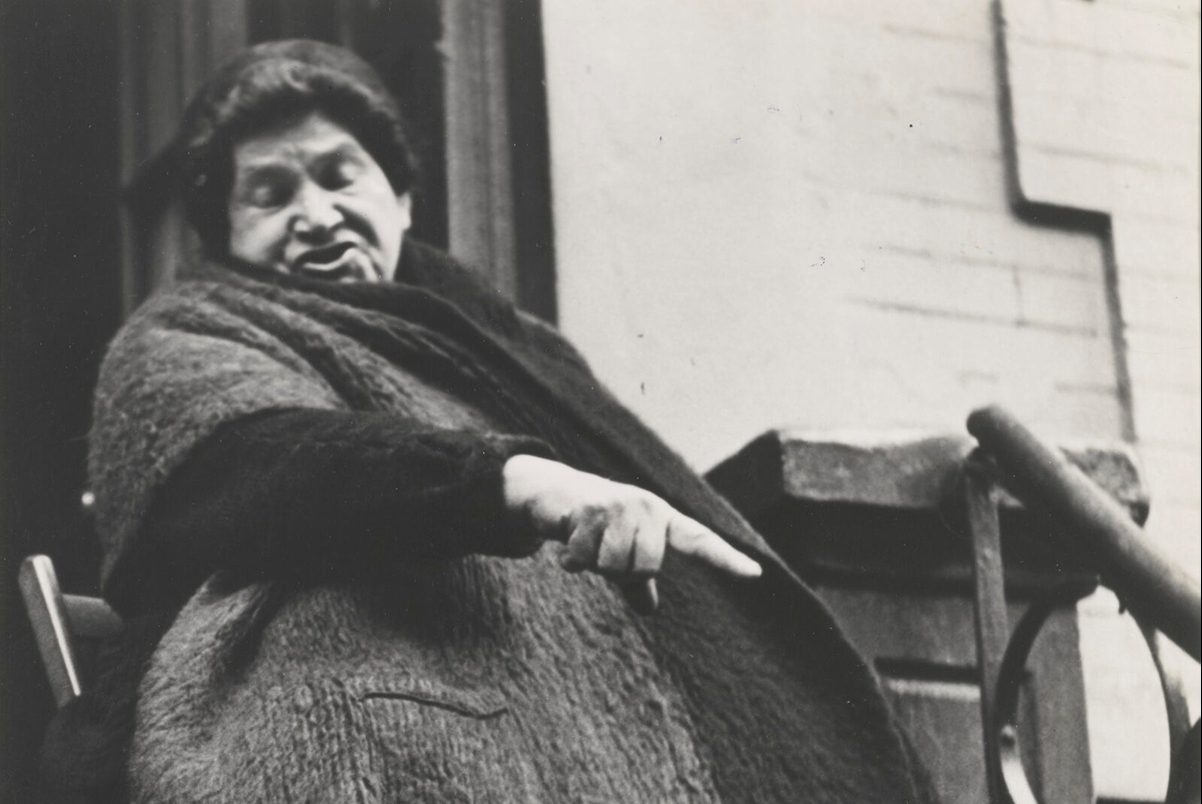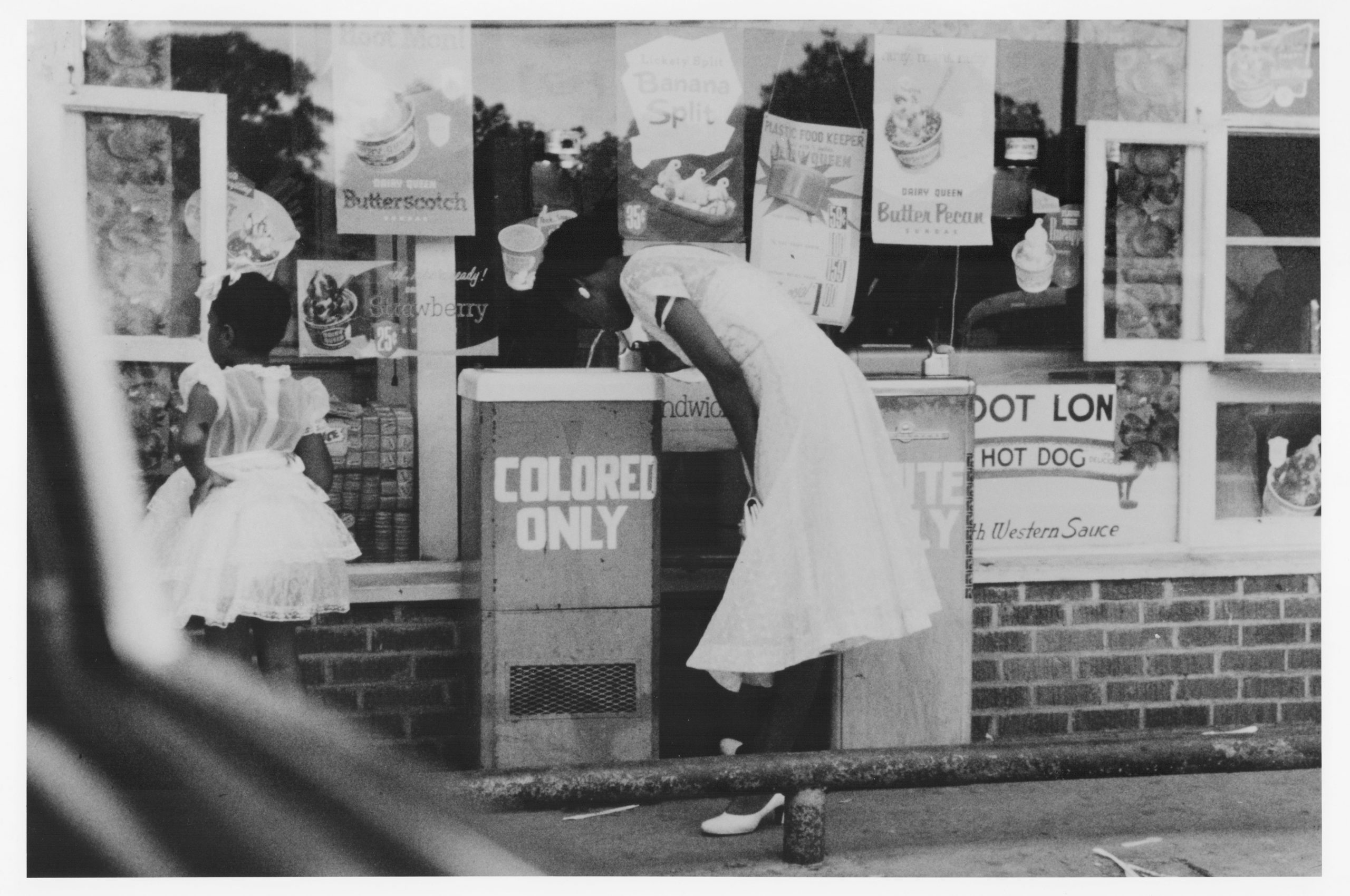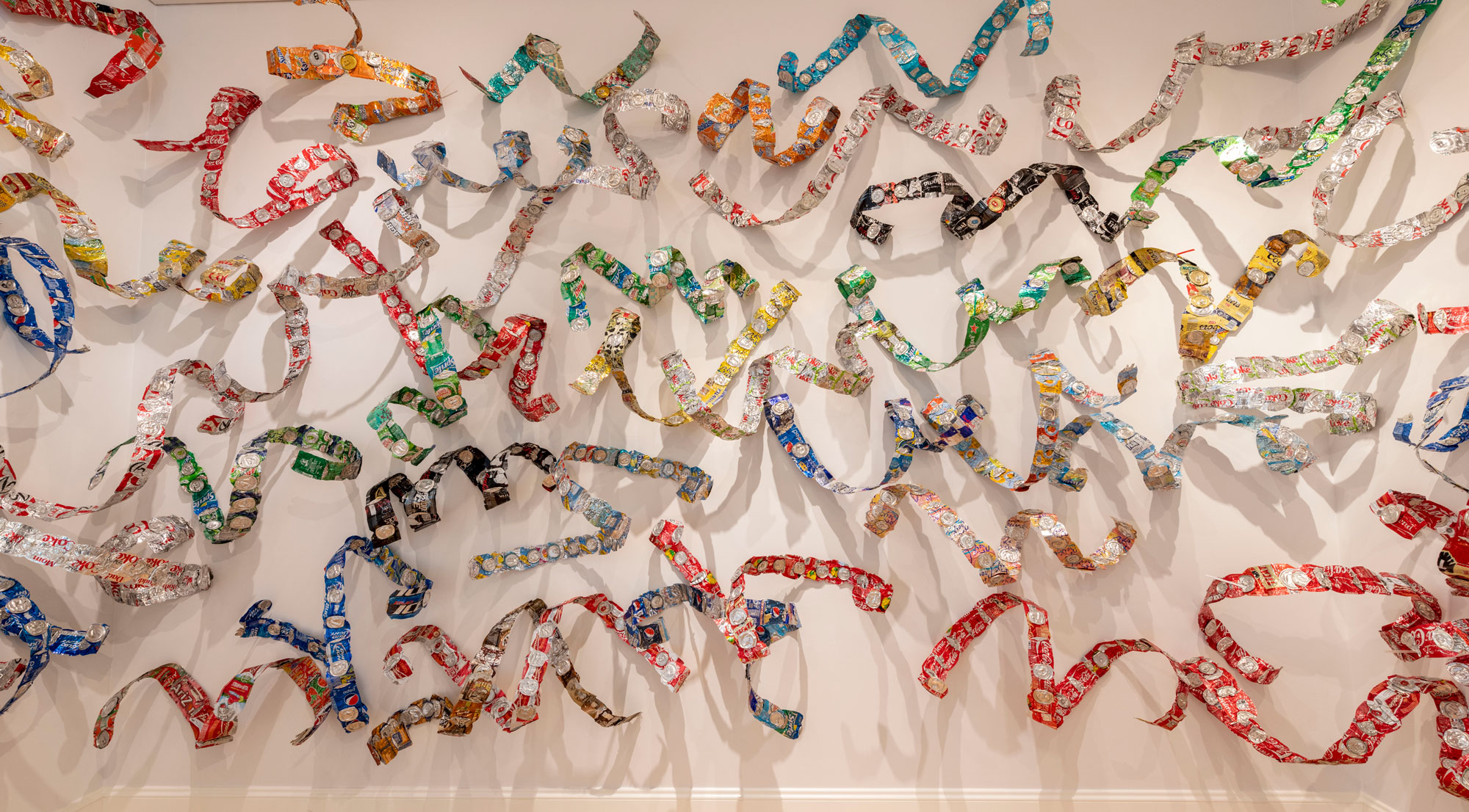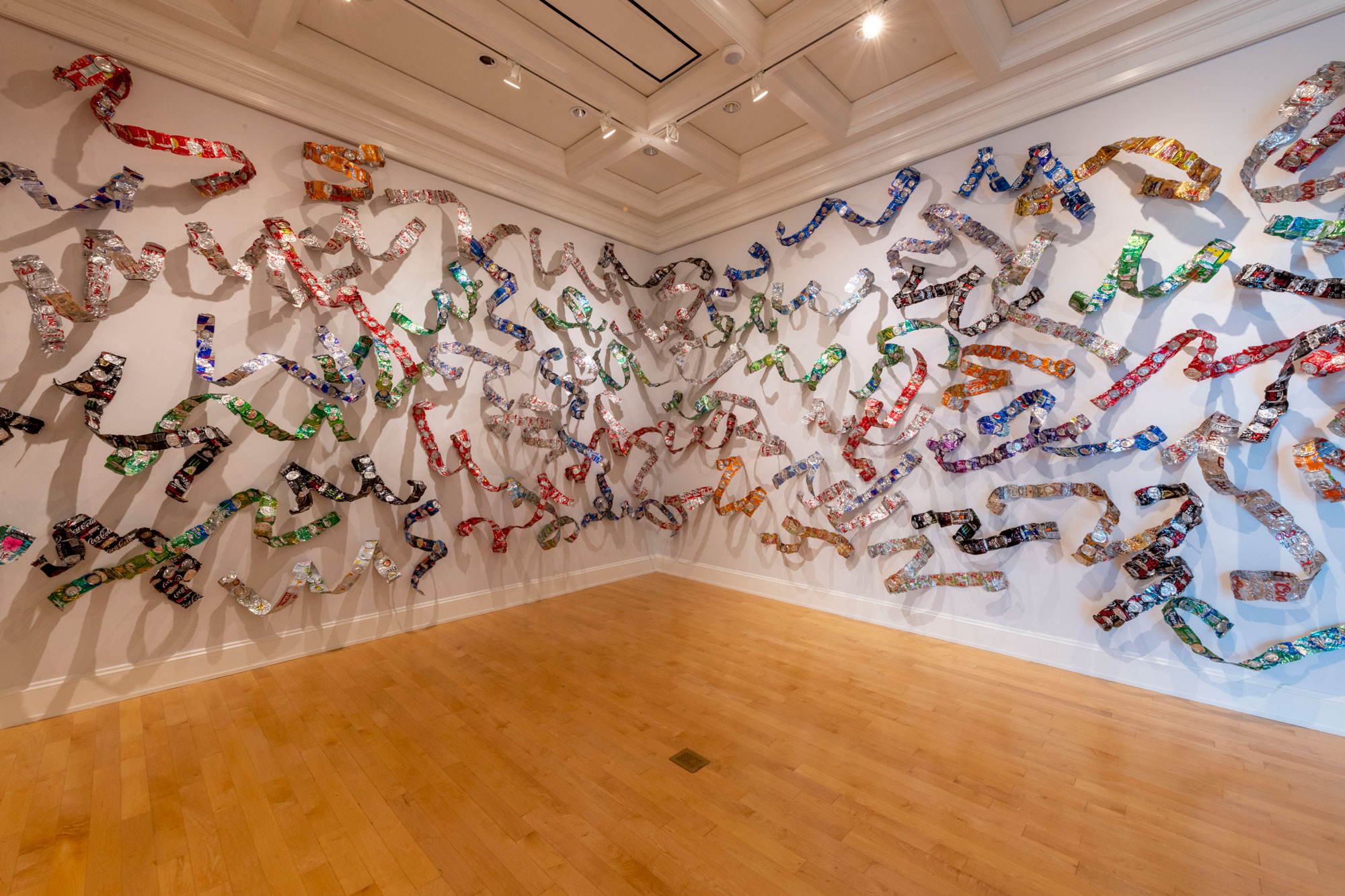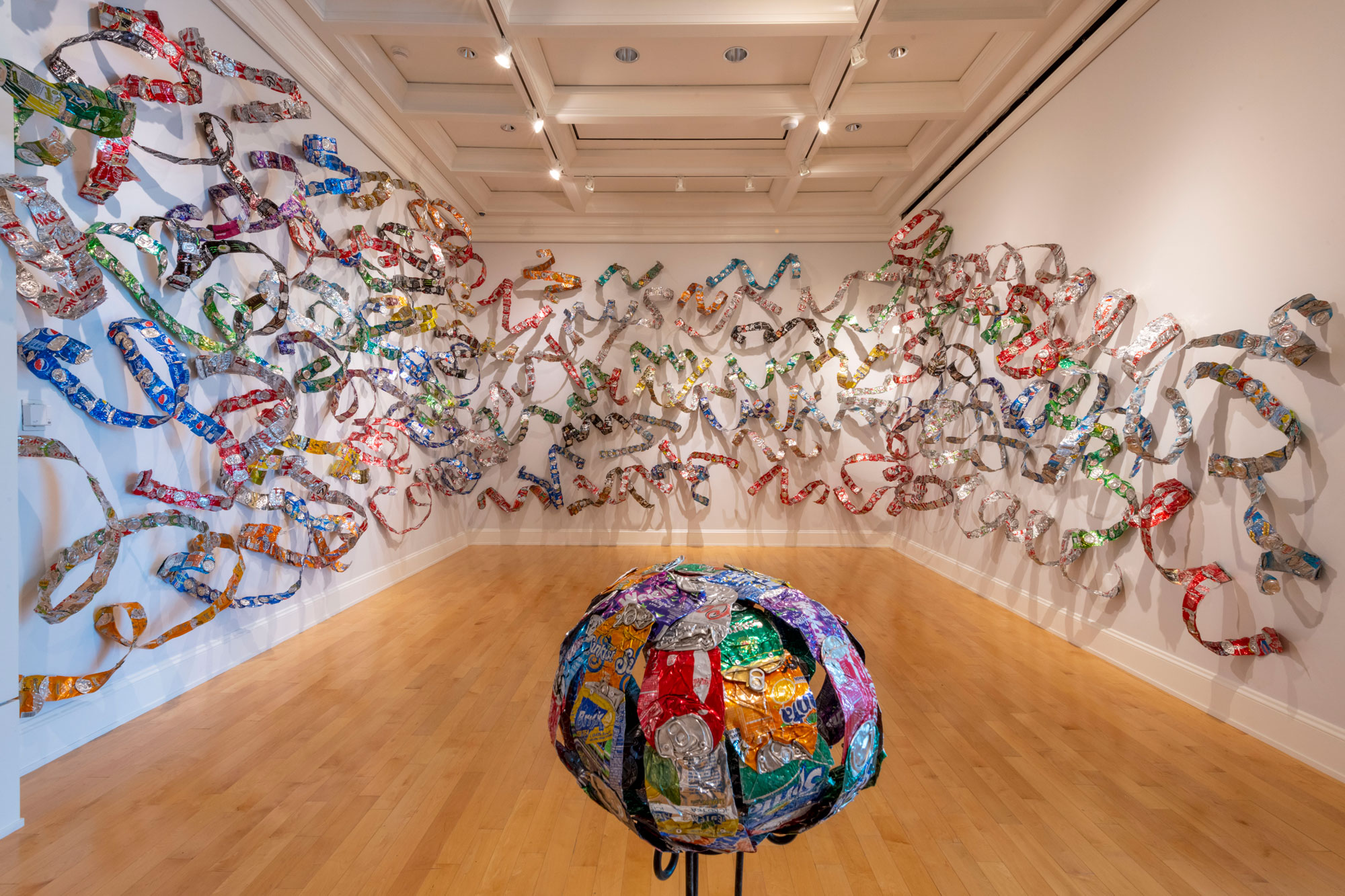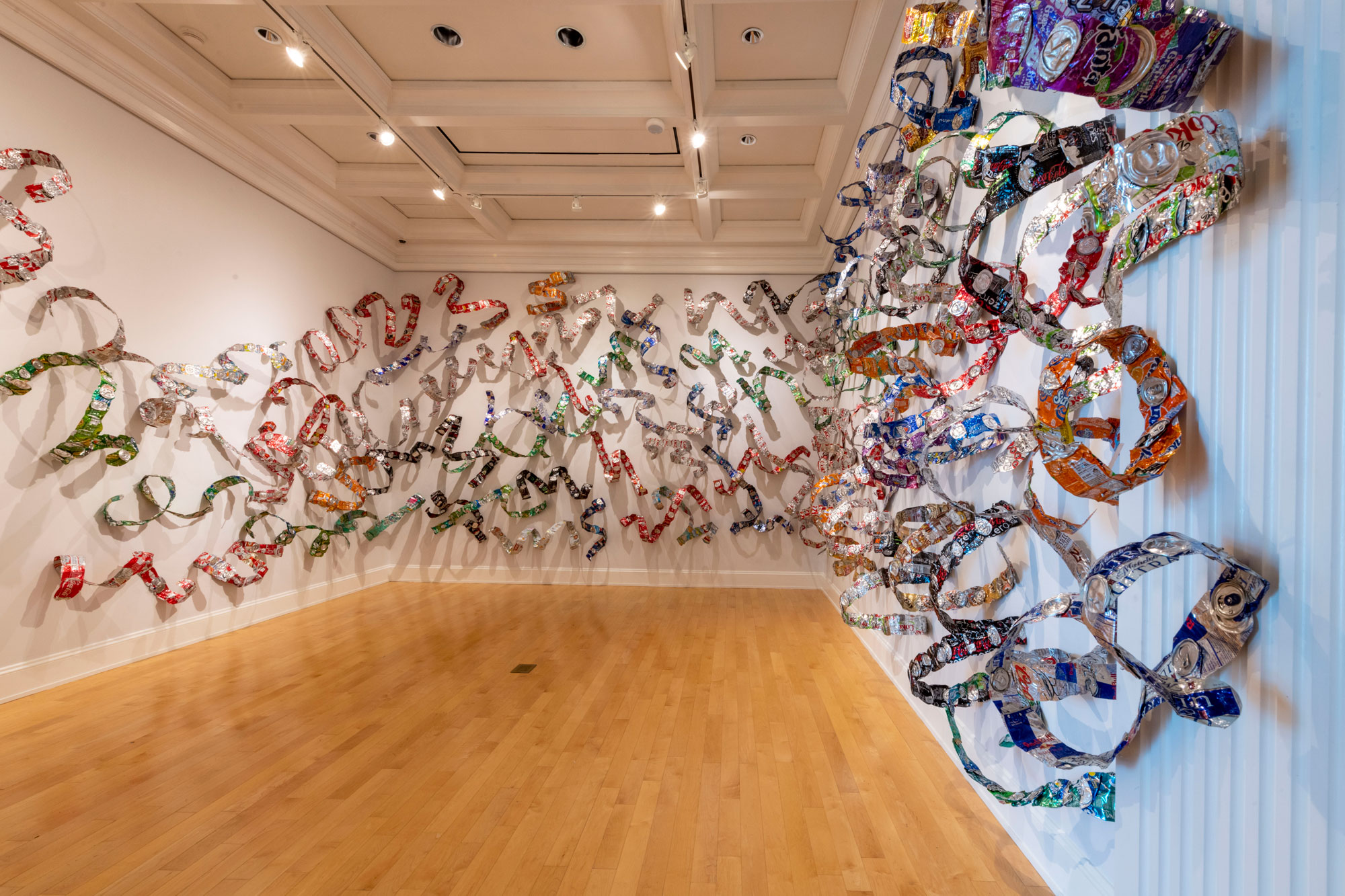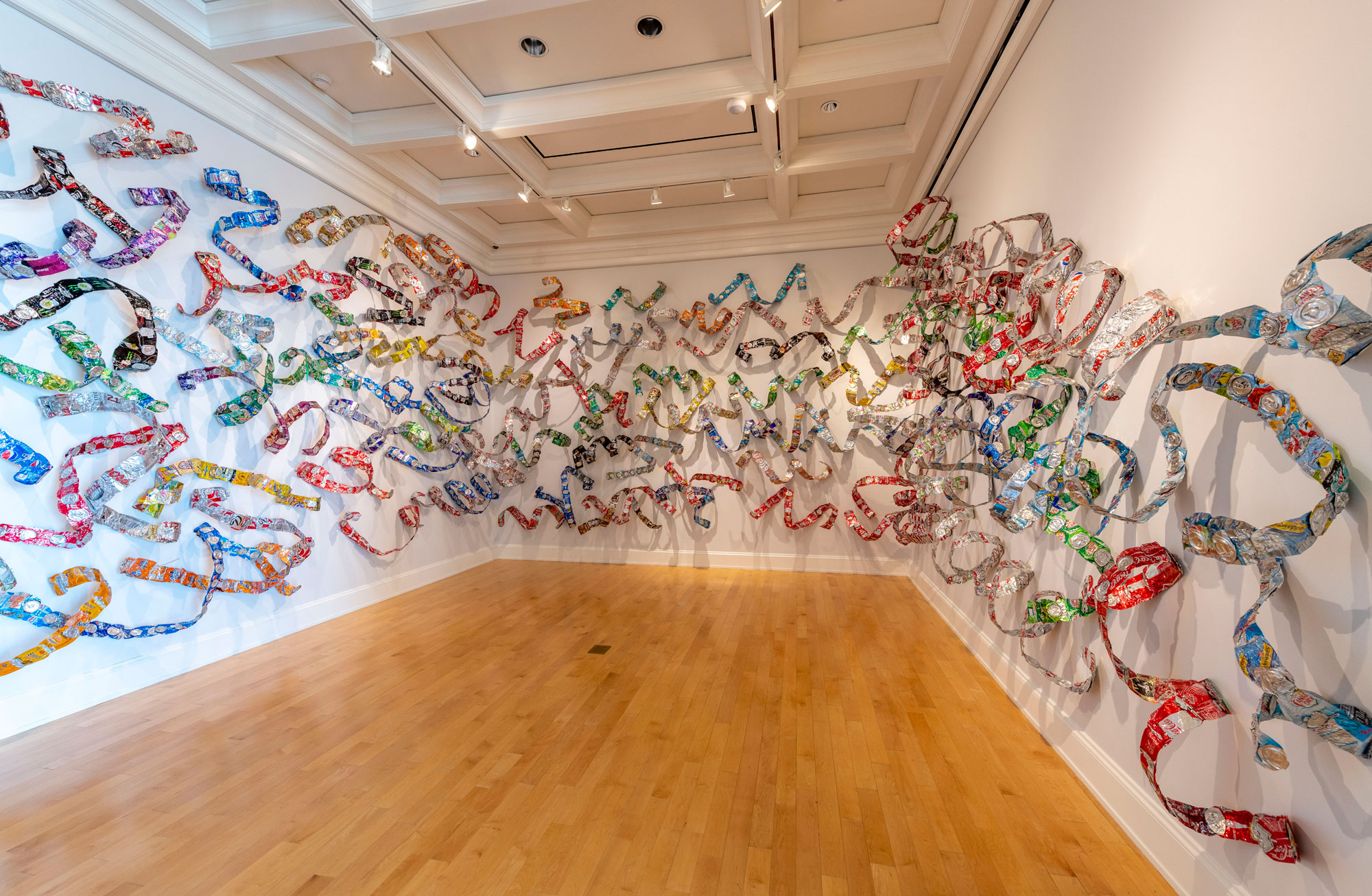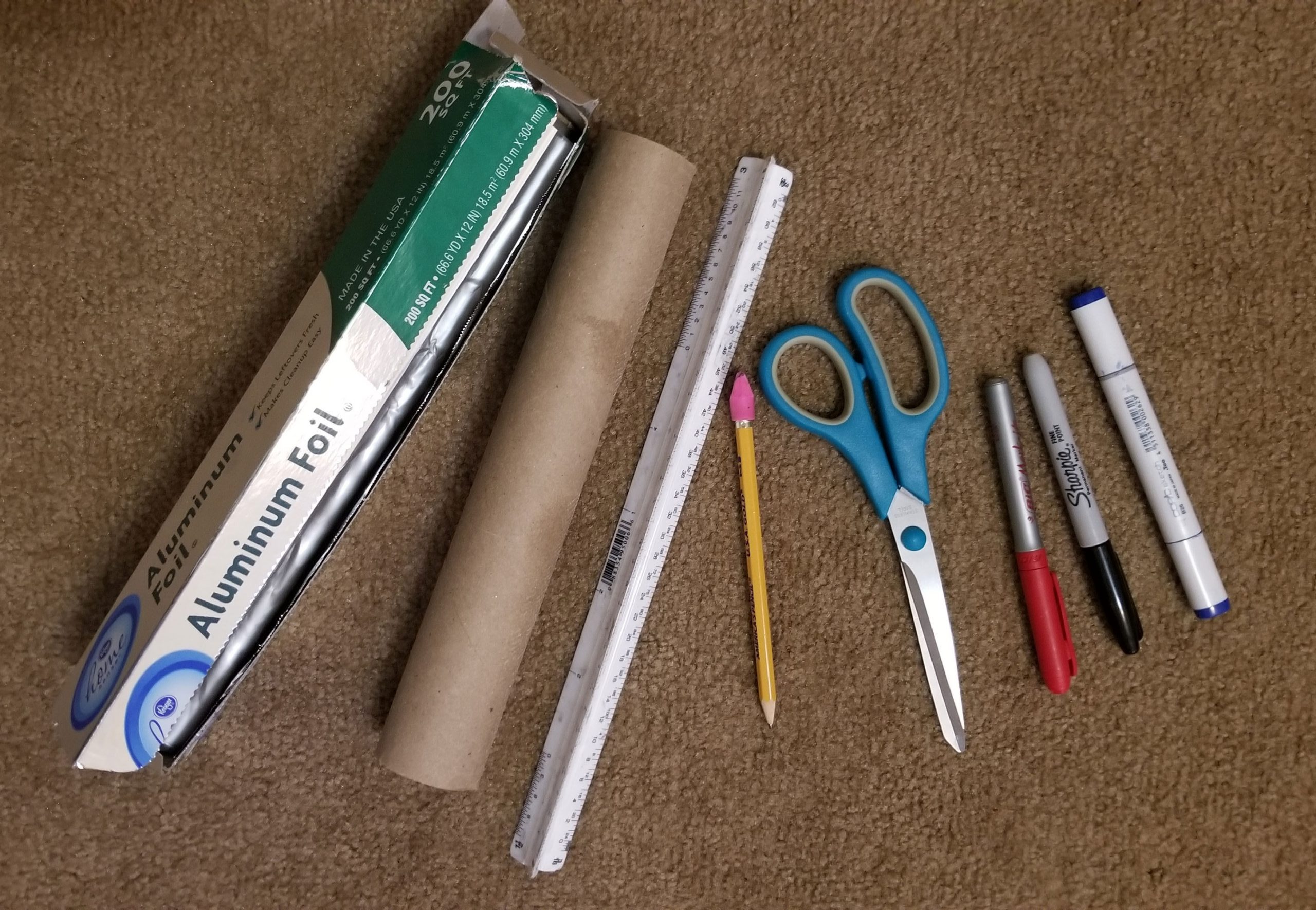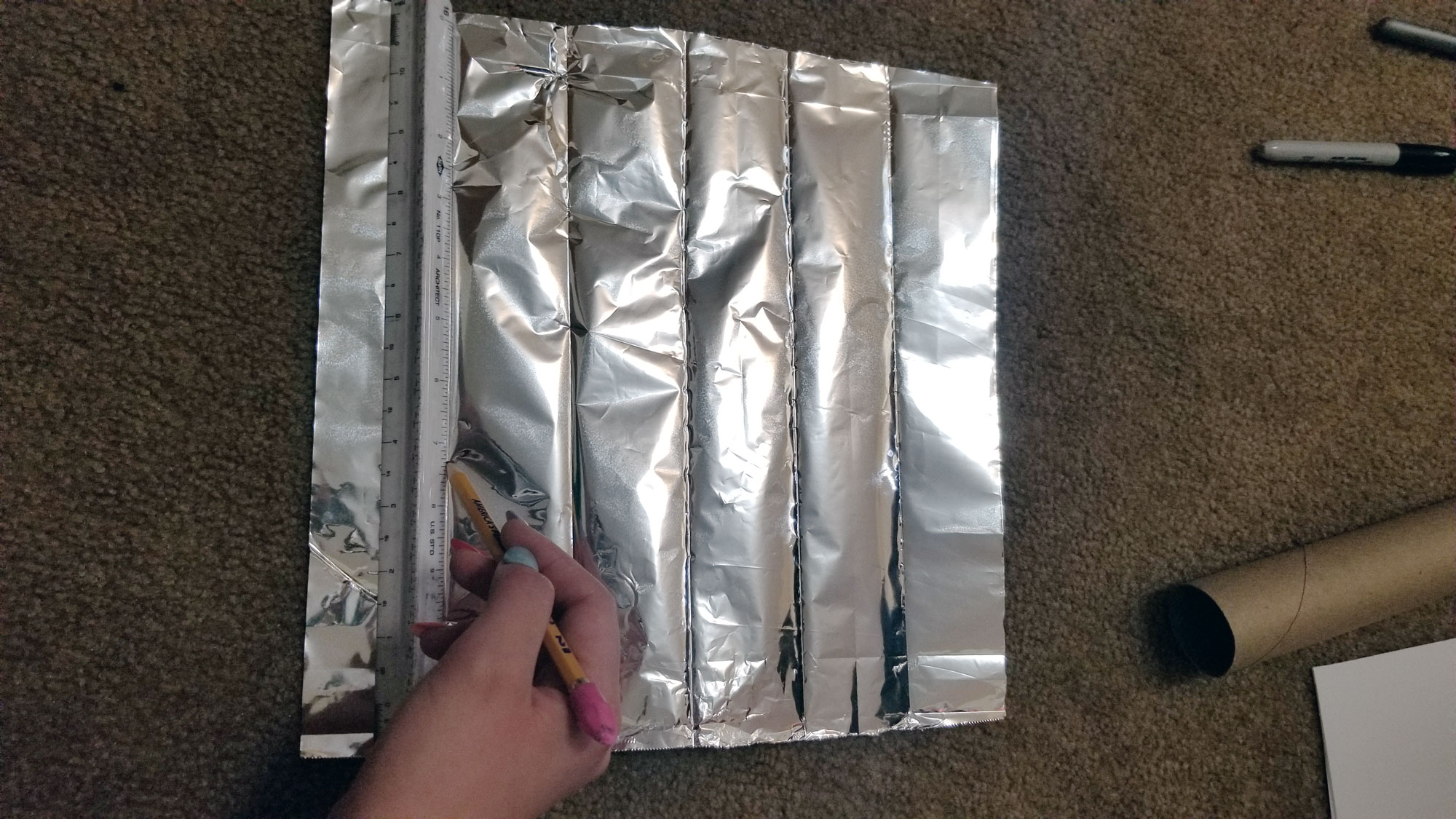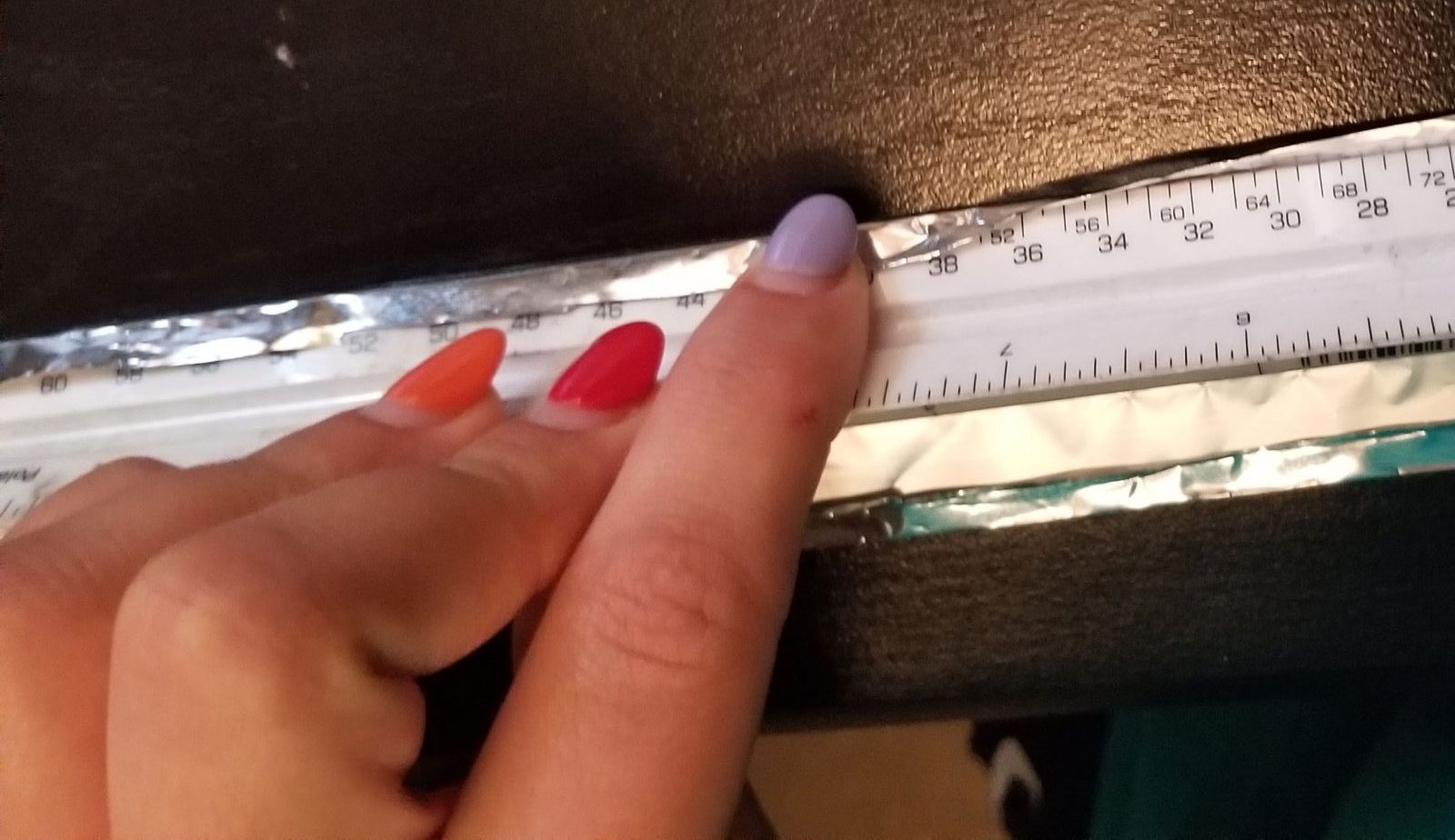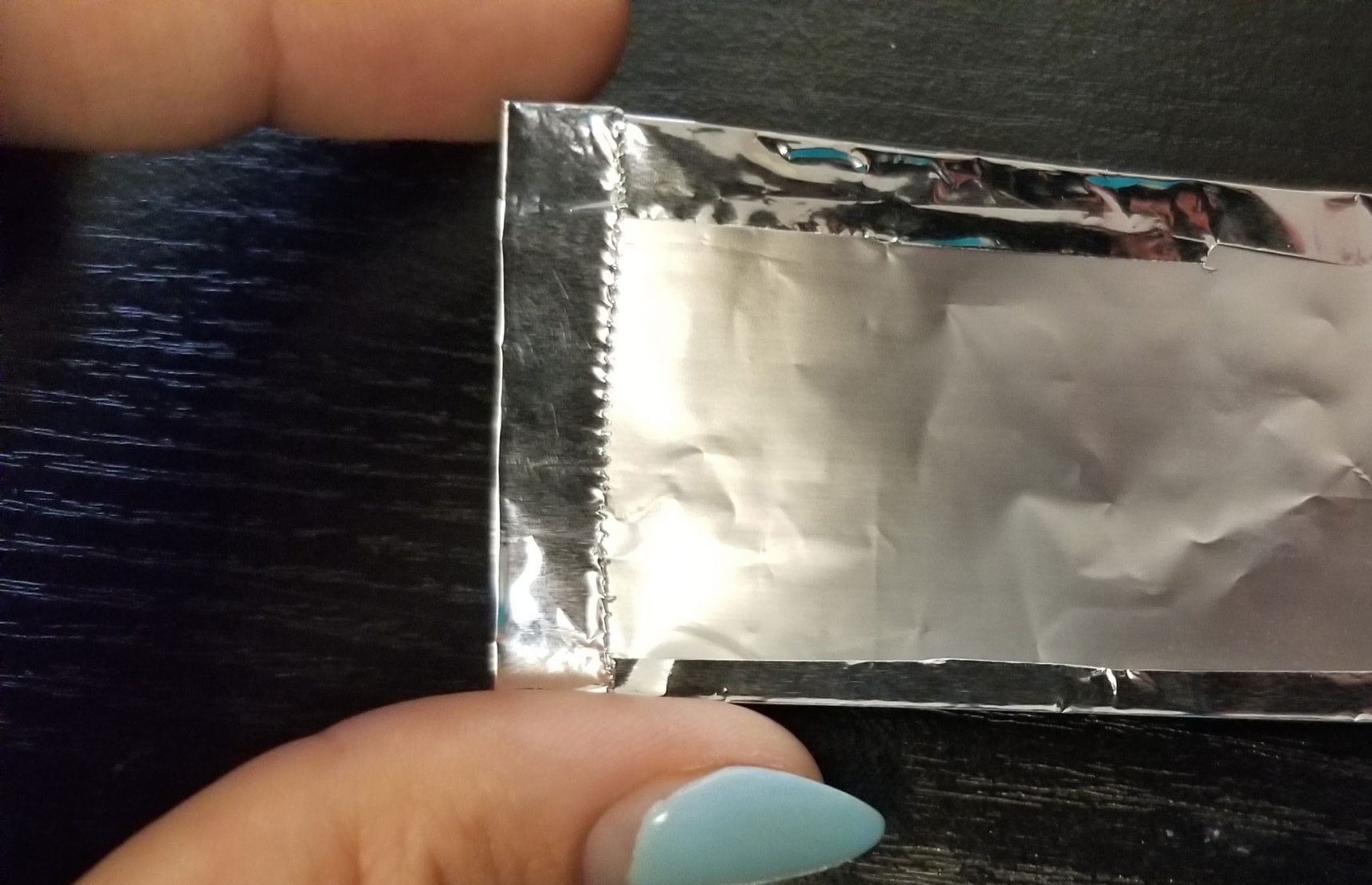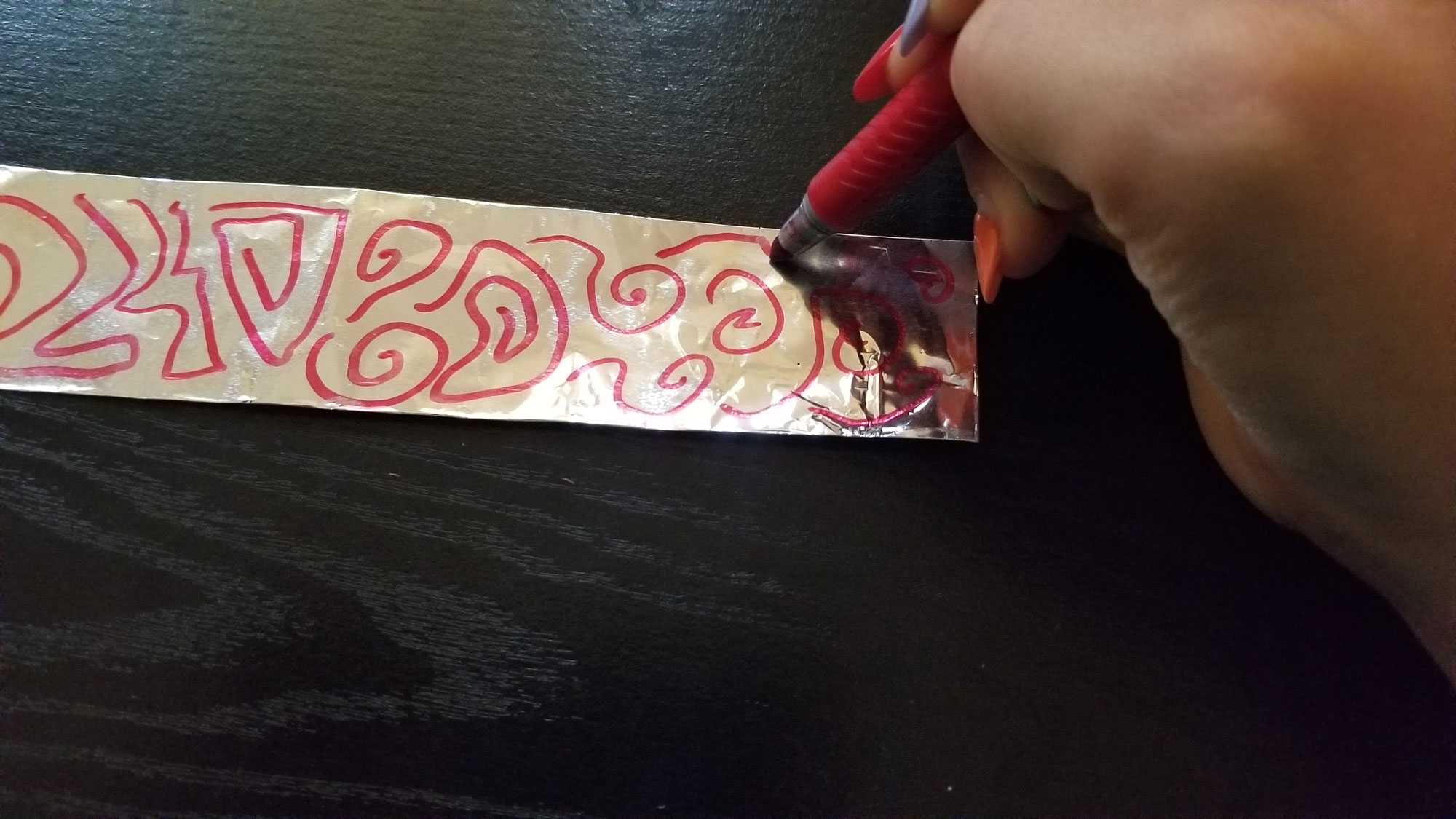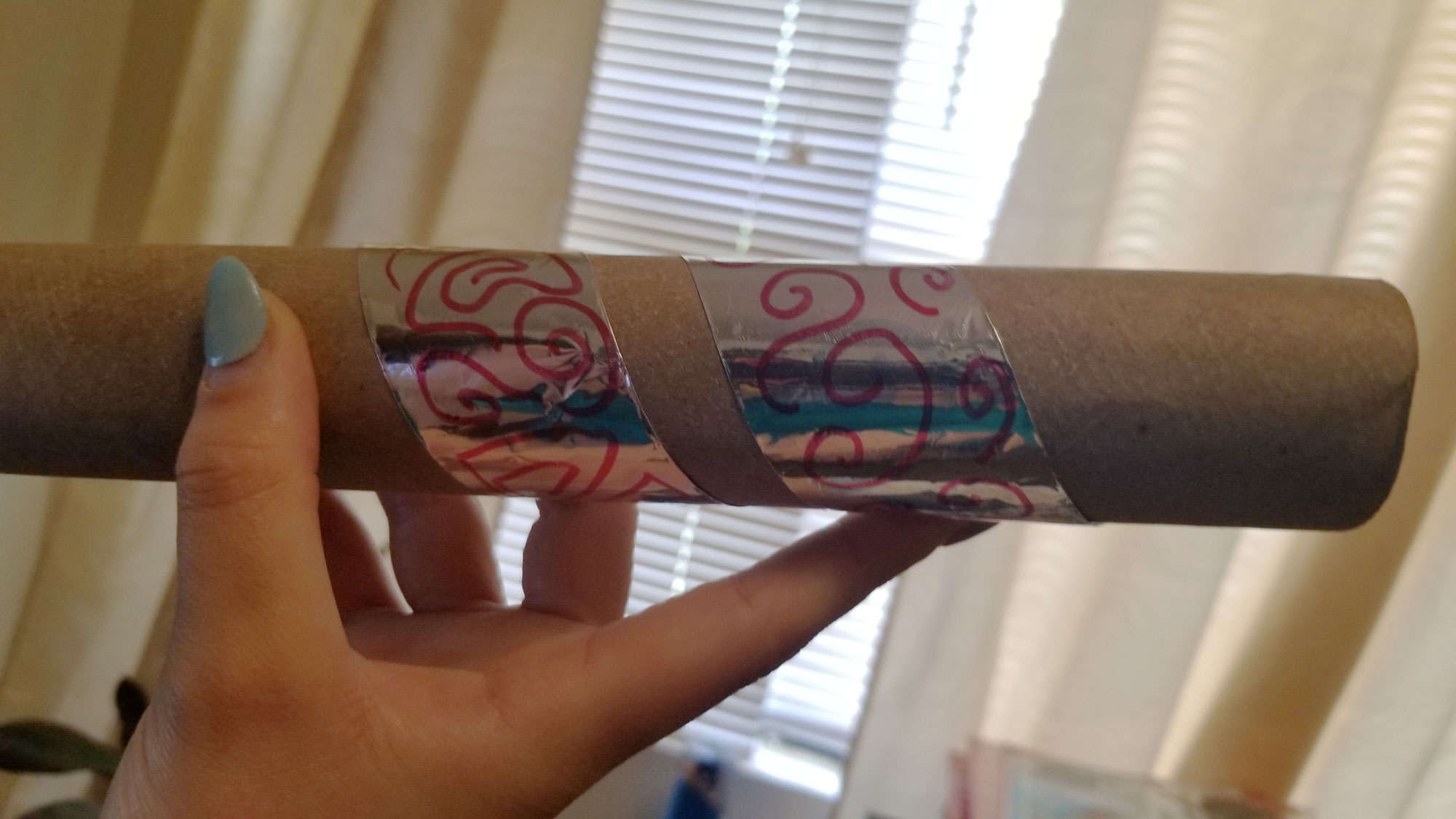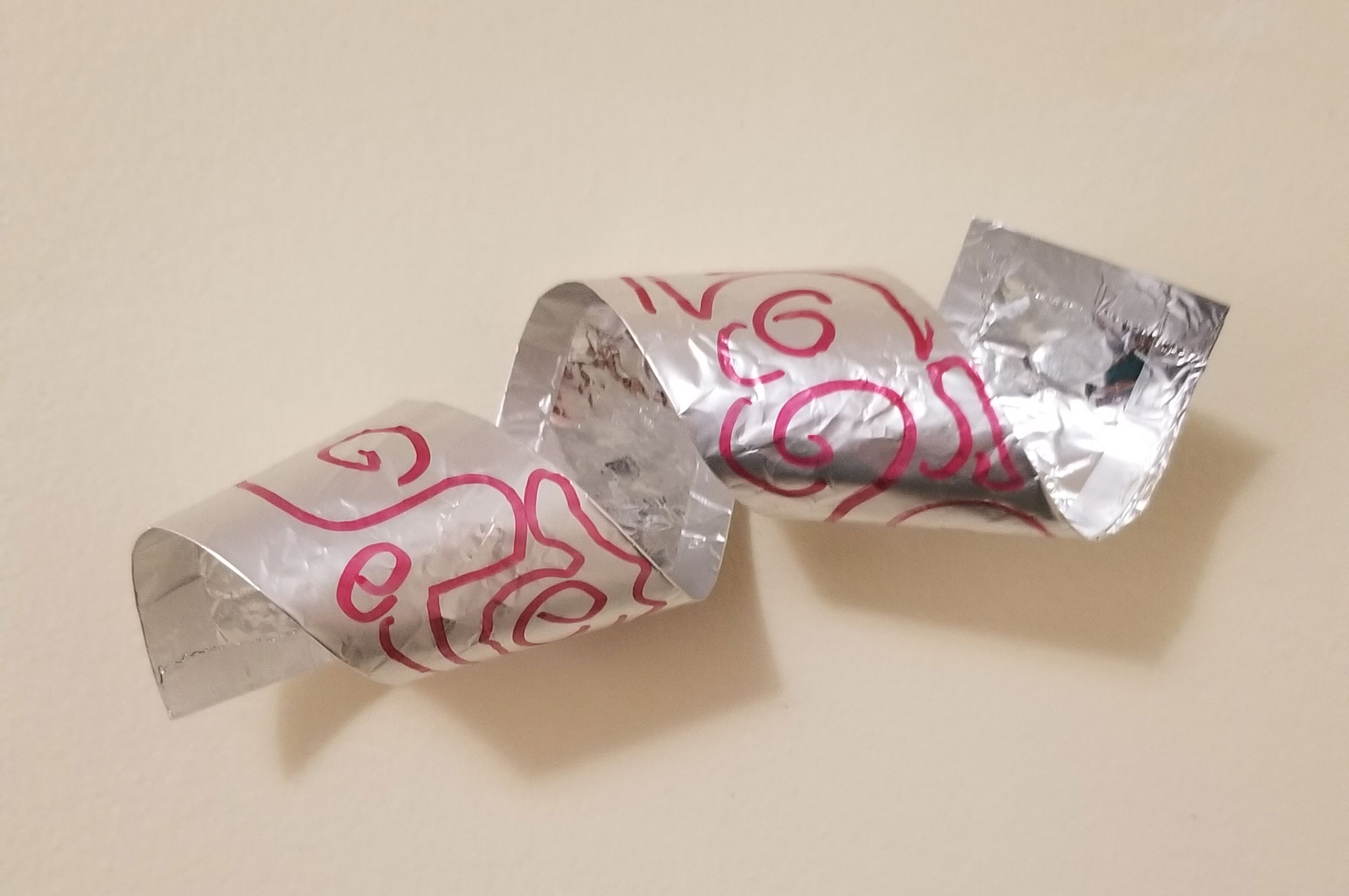This selection of posters, 1973–2018, is from the wide array conceived at the School of Visual Arts for display in the vast New York City subway system. As part of an ongoing promotional and social engagement initiative, they offer a glimpse of the history of the college and the collective talent of some of its acclaimed female design, illustration and photography faculty.
Considered chronologically, more than four decades of vivid graphic design emerge from the discrete lens of women creators. Many of the posters also reflect the artists’ interests and cultural backgrounds, as in Louise Fili’s 2011 and 2016 pieces, which are predominantly typographical, or Yuko Shimizu’s designs that overtly meld in her Japanese heritage. Eye-catching and often imbued with social messages, the works are marked by optimism and an invitation for creativity, encouraging the viewer to “Fly Higher” and “Make It Here.”
The School of Visual Arts in New York has been a leader in the education of artists, designers and creative professionals for seven decades. With a faculty of distinguished working professionals, a dynamic curriculum and an emphasis on critical thinking, SVA is a catalyst for innovation and social responsibility. Comprising 6,000 students at its Manhattan campus and nearly 38,000 alumni in 75 countries, SVA also represents one of the most influential artistic communities in the world. SVA Executive Vice President Anthony P. Rhodes, creative director for the posters since 2007, curated a larger exhibition of these posters, and the museum is grateful to him and SVA for this collaborative project. Special thanks as well to Carlton Nell, professor in the School of Industrial and Graphic Design at Auburn University, for helping to bring this exhibition to the museum.
All posters © 2020 Visual Arts Press, LTD.
